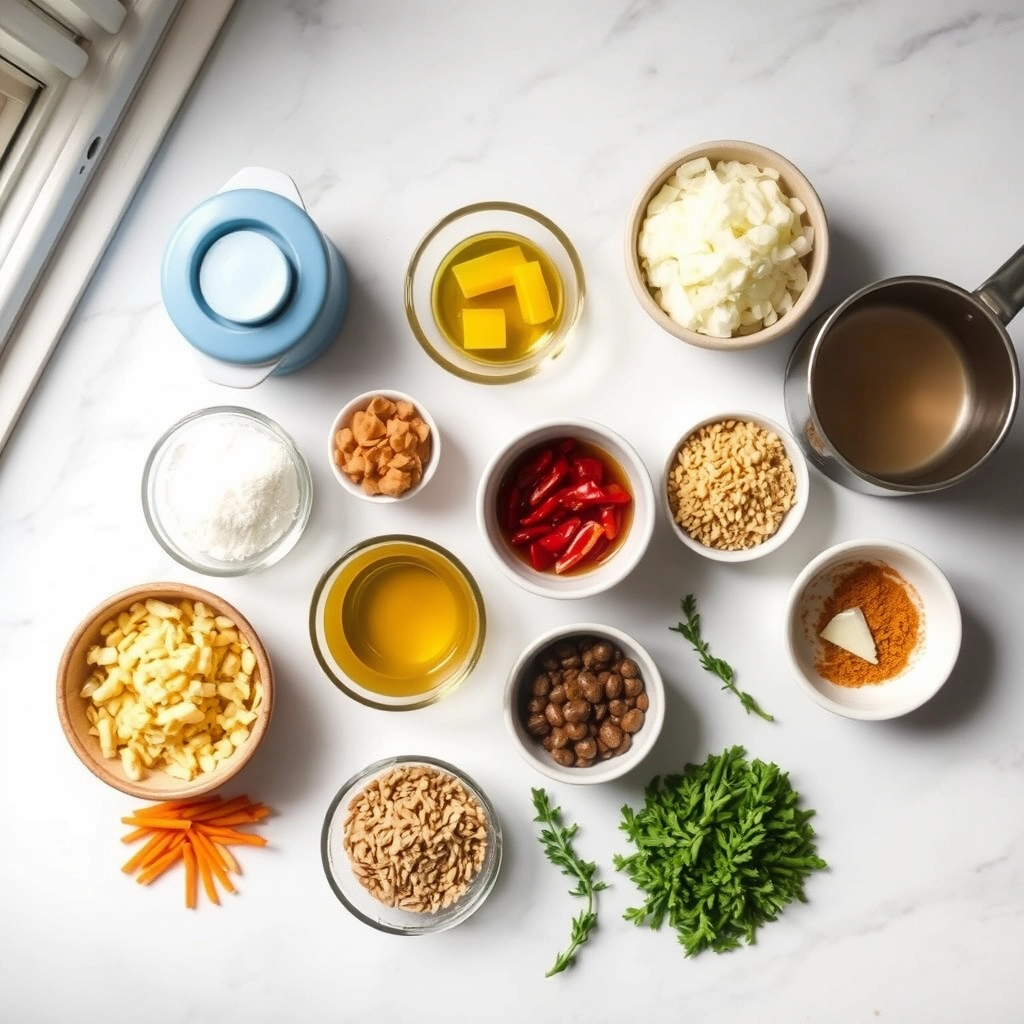Introduction
There’s something deeply comforting about a pot of Homemade Chicken Stock simmering on the stove. The aroma fills your kitchen, wrapping you in warmth and nostalgia. Whether you’re crafting a hearty soup, a creamy risotto, or simply sipping it straight from a mug, this golden elixir transforms ordinary dishes into something extraordinary. Unlike store-bought versions, Homemade Chicken Stock lets you control the flavors, avoid additives, and make the most of every ingredient. Plus, it’s a delicious way to reduce food waste—something we’re passionate about here at Exorecipes.
Homemade Chicken Stock is the foundation of countless recipes, from classic chicken noodle soup to rich gravies and stews. Essentially, it’s a flavorful liquid made by simmering chicken bones, vegetables, and aromatics for hours, extracting their essence into every spoonful. Unlike bouillon cubes or canned broth, which often contain excessive salt and preservatives, this version tastes cleaner and more nuanced. Moreover, it’s packed with collagen, which supports gut health and adds a luxurious mouthfeel to dishes. If you’ve ever wondered why restaurant meals taste so rich, the secret often lies in their stock.
At Exorecipes, we believe cooking should feel approachable and rewarding. That’s why we emphasize techniques like making Homemade Chicken Stock—simple processes with big payoffs. Once you try it, you’ll notice the difference in everything from our creamy chicken pot pie to a basic pan sauce. And if you’re new to scratch cooking, don’t worry. Our beginner’s soup guide breaks down each step without overwhelm.
Why I Love This Recipe
Homemade Chicken Stock reminds me of my grandmother’s kitchen, where nothing went to waste and every scrap had purpose. She’d save vegetable peels and chicken carcasses in the freezer, then simmer them into magic. Now, whenever I make a batch, I think of her—how something so humble could be so nourishing. It’s not just about the flavor, though that’s undeniable. It’s about the ritual, the patience, and the love that goes into each pot. Every time I ladle it into a recipe, I know I’m honoring those traditions while creating new ones.
Health and Nutrition
Why it’s good for your body
Homemade Chicken Stock packs a powerful nutritional punch while keeping ingredients simple and wholesome. First, it delivers collagen from simmered bones, which supports joint health and promotes glowing skin. Additionally, the slow cooking process extracts minerals like calcium, magnesium, and phosphorus, helping to strengthen bones and teeth. Unlike store-bought versions, Homemade Chicken Stock contains no artificial additives, so you control the sodium and avoid unnecessary preservatives.
Moreover, the amino acids in Homemade Chicken Stock, such as glycine and proline, aid digestion and support gut health. These compounds help repair the intestinal lining, making it easier to absorb nutrients from other foods. Furthermore, the warm liquid soothes the throat and provides hydration, especially during cold seasons. Since you make it from scratch, Homemade Chicken Stock also retains more vitamins like B12 and iron, which boost energy levels and immune function.
Finally, the natural gelatin in Homemade Chicken Stock promotes satiety, helping you feel full longer. This makes it a smart choice for anyone managing weight or seeking balanced nutrition. Whether you sip it alone or use it as a base for soups and stews, Homemade Chicken Stock offers a delicious way to nourish your body.
How it fits in a healthy lifestyle
Homemade Chicken Stock fits seamlessly into a balanced diet, whether you follow specific eating plans or just aim for cleaner meals. For gluten-free or paleo lifestyles, it serves as a flavorful foundation for dishes without grains or processed ingredients. If you prioritize heart health, you can easily adjust the sodium levels while still enjoying its rich taste and mineral benefits.
Protein-focused eaters will appreciate how Homemade Chicken Stock enhances meals like hearty chicken soup, adding depth without extra calories. It also works well in meal prep, since you can freeze batches for quick weeknight cooking. For gut-friendly eating, try incorporating it into vegetable-based broths to maximize nutrient absorption.
Beyond recipes, sipping Homemade Chicken Stock as a warm drink can curb cravings and replace less nutritious snacks. Its versatility makes it a kitchen staple for anyone committed to mindful, wholesome eating.
Print
Homemade Chicken Stock
Description
A rich and flavorful homemade chicken stock perfect for soups, stews, and sauces.
Ingredients
For the Crust:
- 1 whole chicken carcass (or 2 lbs chicken bones)
- 1 large onion, quartered
- 2 carrots, roughly chopped
- 2 celery stalks, roughly chopped
- 3 garlic cloves, smashed
- 1 bay leaf
- 1 tsp black peppercorns
- 2 sprigs fresh thyme
- 8 cups cold water
- 1 tsp salt (optional)
Instructions
1. Prepare the Crust:
- Place chicken carcass or bones in a large stockpot.
- Add all vegetables, garlic, bay leaf, peppercorns, and thyme to the pot.
- Pour in cold water until ingredients are fully submerged.
- Bring to a boil over high heat, then reduce to a low simmer.
- Skim off any foam or impurities that rise to the surface.
- Simmer uncovered for 3-4 hours, occasionally skimming fat.
- Strain the stock through a fine-mesh sieve into a large bowl.
- Discard solids and let stock cool before storing or using.
Notes
You can customize the seasonings to taste.

How to Prepare This Dish
Steps and time-saving tips
Start by gathering all your ingredients for Homemade Chicken Stock—this ensures a smooth process without interruptions. First, place the chicken carcass or bones in a large pot, then cover them with cold water. Turn the heat to medium-high and bring the water to a gentle boil. Meanwhile, roughly chop onions, carrots, and celery—no need for precision here, as they’ll soften anyway. Once the water boils, reduce the heat to low and skim off any foam that rises to the top with a slotted spoon. Next, add the chopped vegetables, a handful of peppercorns, and a bay leaf or two. Let everything simmer uncovered for at least 4 hours, though longer cooking deepens the flavor. Stir occasionally to prevent sticking, and top off the water if it reduces too much. For a time-saving hack, use a slow cooker on low for 8-10 hours—just set it and forget it. Finally, strain the stock through a fine-mesh sieve into a large bowl, discarding the solids. Let it cool before storing, and skim off any fat once chilled. Homemade Chicken Stock freezes beautifully, so make extra for future soups or sauces.



